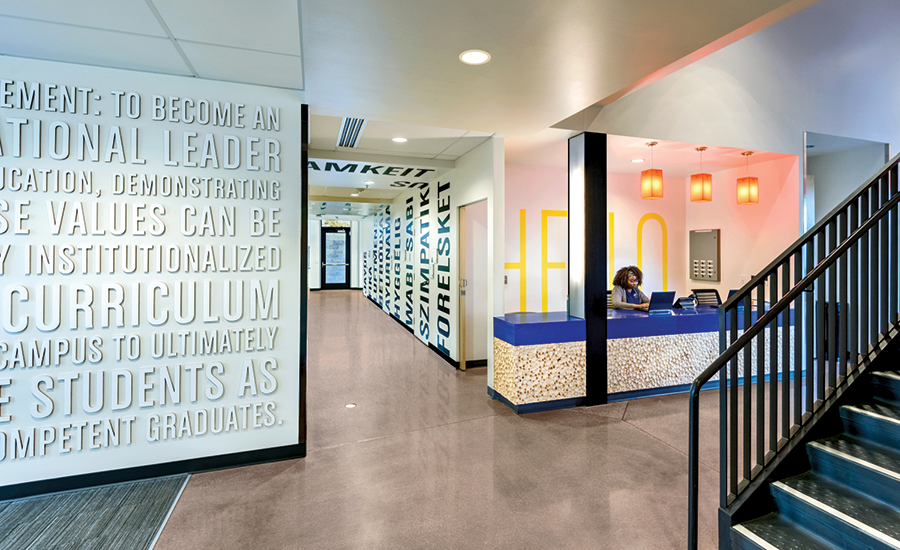The Role of Third Places
Micène Fontaine, July 28, 2022
In 1982, when the term "third place" was coined by sociologist Ray Oldenburg to refer to spaces that are neither home nor work, social media did not exist, neither did the internet, and there were clear lines between where people worked and where they lived. Things have changed quite a bit on that front. Yet, third places are as essential to community life today - if not more - than 40 years ago.
A third place par excellence, the International Student Pavilion at Northern Arizona University is a LEED Platinum building where you won't find the typical display of international flags. In her TEDx talk "Places and Spaces and the Behavior They Create," Architect Damaris Hollingsworth explains that the Provost had asked her team to find a way to acknowledge and engage the international and domestic student population - without flags. Every language has words that have no word-for-word translation in other languages, so she suggested walls that boast "untranslatable" words in various languages - including English. It worked; students look for "untranslatable" words in their native language and share the meaning with others.
 Image: NAU's International Pavilion - lobby and untranslatable words - by INCKX Photography
Image: NAU's International Pavilion - lobby and untranslatable words - by INCKX PhotographyConnections, engagement, and a sense of belonging are woven into the walls. It shows the extent to which spaces shape the way we feel, our sense of belonging, and the way we behave.
This is just one example, but all third places that set the stage for meaningful connections share eight characteristics, that were drawn from Oldenburg's work:
- Neutral ground
- Leveler (a leveling place)
- Conversation is the main activity
- Accessibility and accommodation
- The regulars
- A low profile
- The mood is playful
- A home away from home
For additional food for thought on this topic, Damaris' full TEDx talk "Places and Spaces and the Behavior They Create" is well worth watching; interior designer Lisa Waxman's book "Designing Coffee Shops and Cafes for Community" is well worth reading or you can check out her Change by Design session on "Designing for Connection in the Third Place."
Whichever thread you follow, you will quickly realize that it comes down to creating spaces that invite our full stories to unfold.
"Every built environment tells and creates stories. They make an impact. Every space does something. We need to make sure it's the right thing."
Damaris Hollingsworth, NCARB, AIA, NOMA, LEED AP, Principal Architect, Design by Melo




